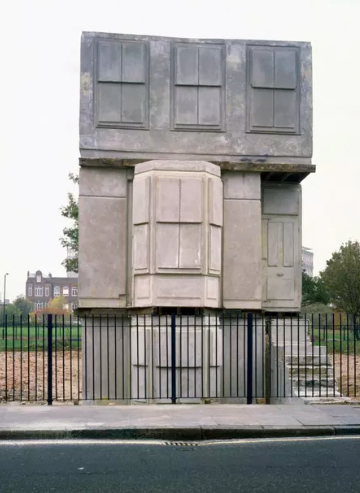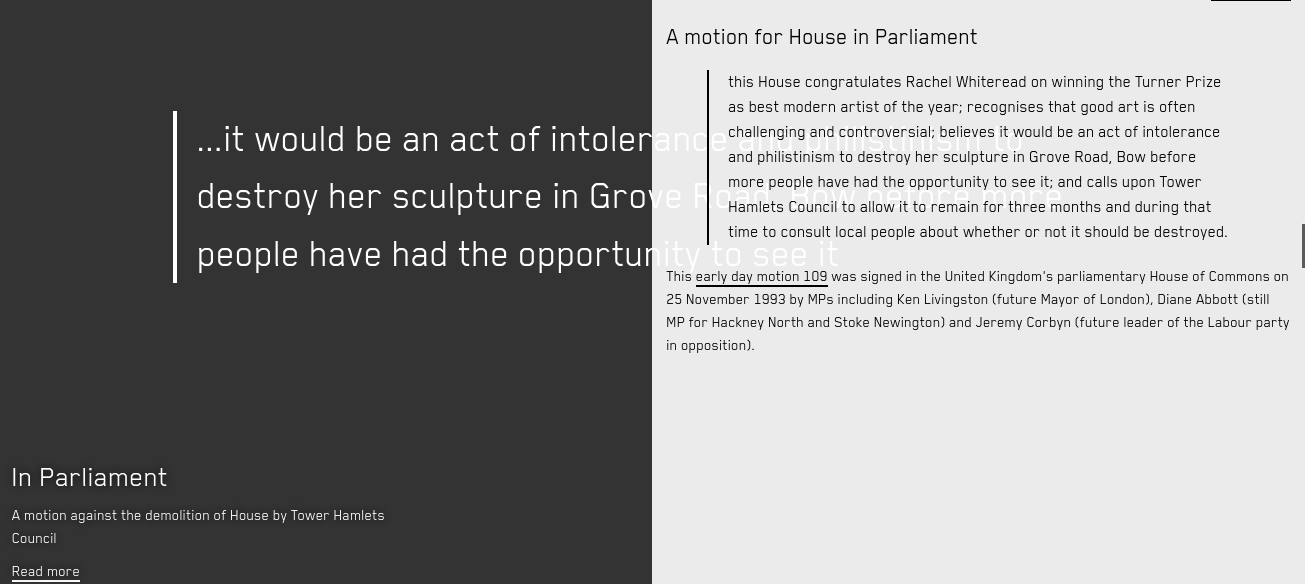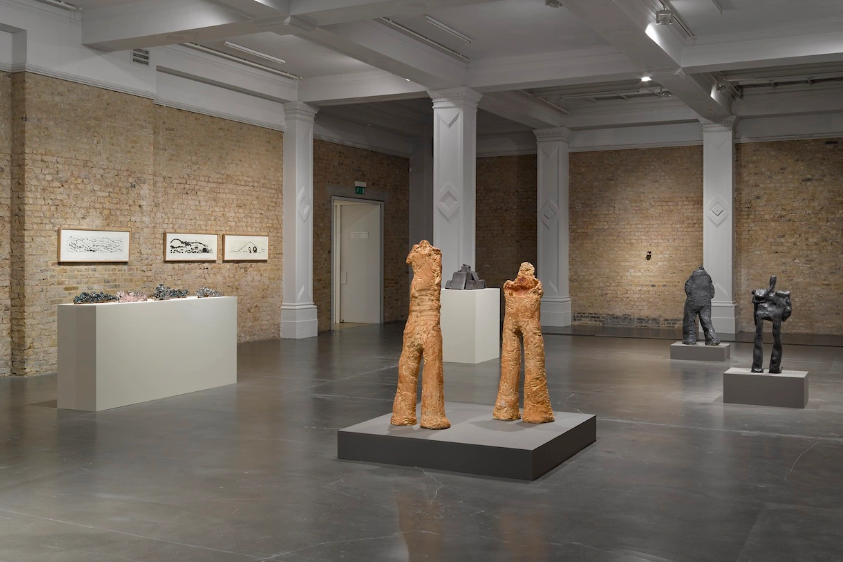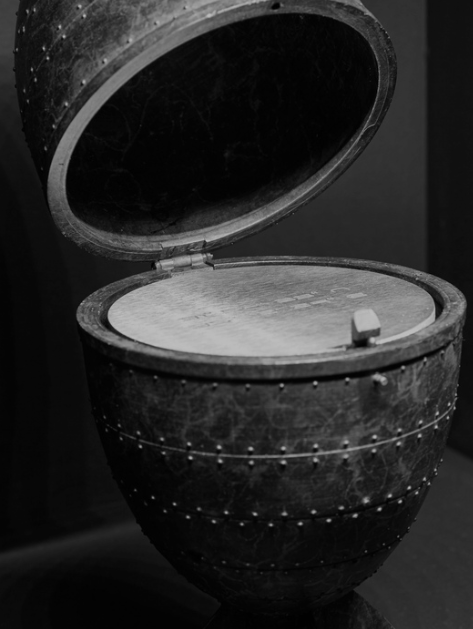This week, we had a guest lecture by Dr Jonathan Gardner, an archaeologist and researcher, who explores connections between archaeology and art, mostly in the form of WASTELANDS. I found these connections interesting, especially how certain methodologies overlap onto art and how artists utilise archaeological terminology and processes. These methods, a mix of traditional and contemporary, include: surveys, excavation, photography, ethnographic interviews, documentary research of relevant literature and records, and, most recently, creative practice. Gardner spoke of contemporary archaeology (19th-20th centuries) as a way of seeing how the contemporary world around us is produced and what marks we leave upon the earth that can relay current and past living patterns to us.

Rachel Whiteread, House, at 193 Grove Road, London E3, 1993. © Rachel Whiteread. Photo by Sue Omerod. Courtesy of the artist and Gagosian.
An artist that highlights the heterotemporality nature of archaeology is Rachel Whiteread, whose sculptures co-exist in multiple time zones at once. Whiteread casts spaces around objects to interrogate relationships we have with these objects and the places they can be found in.; turning these into solid forms that can be seen, felt and described. Her work House, which ran between 1993-94 for 80 days, depicts the concrete documentation of a house that was soon to be demolished for redevelopment, creating a remnant that deals with loss and absence, archaeological attributes. The ephermerialty of the artwork itself reflects on the housing crisis and a prominent problem in London that demolishes long-standing houses in favour of modern flats, embodying the steady destruction of so much of East London (1). This mix of archaeology, art and social standing is relevant to archaeologies nature of piecing together narratives of past lives and places, a mode of productive storytelling. In The House in the Park: a psychogeographical response (1), Iain Sinclair forwards ‘what did your street look like in the past?’ alluding to the nature of ghost streets that no longer exist apart from in maps and peoples memories of them; an importance can be found in moments of nostalgia that reach into history or a more recent past, with codes along the landscapes as to signify what was there and what may be there in the future. Archaeologies of the Contemporary Past, introduces ethno-archaeology, asking the question of what if archaeologists were to dig our remains in a thousand years, what would that tell them about us? suggesting a reflexive approach that links material culture to behaviour (2).

1 The House in the Park: a psychogeographical response. Iain Sinclair. Accessed at: https://www.artangel.org.uk/house/iain-sinclair/
2 Archaeologies of the Contemporary Past. (pg. 5). V. Buchli, G. Lucas. Routledge (2001).
Fossils are records of life on earth; evidence to earlier civilisations. Recently, changes in these artefacts have been driven by cultural, not biological, evolution (3), human impact is changing the DNA and shape of animals like the chicken, which has more than doubled in size since the 1950s. Social factors of cheapness of this meat and rate of consumption has altered this animal so that they can create more meat per amount of food given to them. Examining these fossils have allowed us to witness this recent dramatic impact that we have on the world around us, exposing sometimes harmful relationships between us and the nonhuman. These traces cling onto the planet, enabling us to decipher various timescales; archaeologists discover the past as a present, re-telling history as non-linear. Along with chicken bones and ancient fossils, current materials like media drives, plastic bottle and bicycles will become fossilised and be encoded in earths landscapes for future generations to come.
3 The technofossil record of humans. J. zalasiewickz, M. Williams, P. Haff. The Anthropocene Review 1:1 (2014).

Simone Fattal. Finding a Way, Whitechapel Gallery. 2021-22. Photo Jack Hems.

Archaeology in Absentia. Larissa Sansour/Soren Lind. 2016

Archaeology in Absentia. Larissa Sansour/Soren Lind. 2016

I believe Simone Fattal’s work can be situated within ethnoarchaeology as she responds to ancient cultures that are intertwined with myth and legend. These clay forms are reminiscent of excavations, responding to political narratives and issues around archaeological digs. Walking around Fattal’s Finding a Way exhibition at Whitechapel Gallery (2022), I felt I was at a place of origins where the works were not made by human hands at all but appeared from the brick walls and stone floors surrounding them. Fattal puts herself into the work, depicting memories of Damascus, Syria and correlations between migration, war and religion. The space where these works are shown in the gallery used to be a library which I think adds to its exploration of temporality and shifting modes of place. Similar to this is Larissa Sansour’s work Archaeology in Absentia, using munition replicas to reflect on destruction war and its excessive machinery on landscapes; leaving permanent patterns that echo these events on landscapes. In absentia means absence and loss, with these hollow-shaped vessels acting as containers for nothing; landscapes and ancient sites that have succumbed to war.

Hackney Marshes, wikipedia.
It was interesting to hear about Jonathan Gardener’s Reimagining Waste Landscapes project that explores how these wastelands have come to be and what they are used for. An example of this is the Hackney Marshes in London, this landscape is made up of rubble that comes from the remains of bombed places during the second world war. This was then used to house football pitches, but questions have arisen regarding the safety of this site as rubble here may be toxic and is beginning to cause flooding in the surrounding area. This is similar to the Owens Valley story we looked at (blogpost week 7) that involved dust as a feral entity that has caused chaos to surrounding people from the input of human infrastructure in the form of a dam. This problem in the Hackney Marshes is a direct result of human impact on the environment in the form of excessive changes to landscapes and pushing narratives of how they are to be used.


Leave a Reply